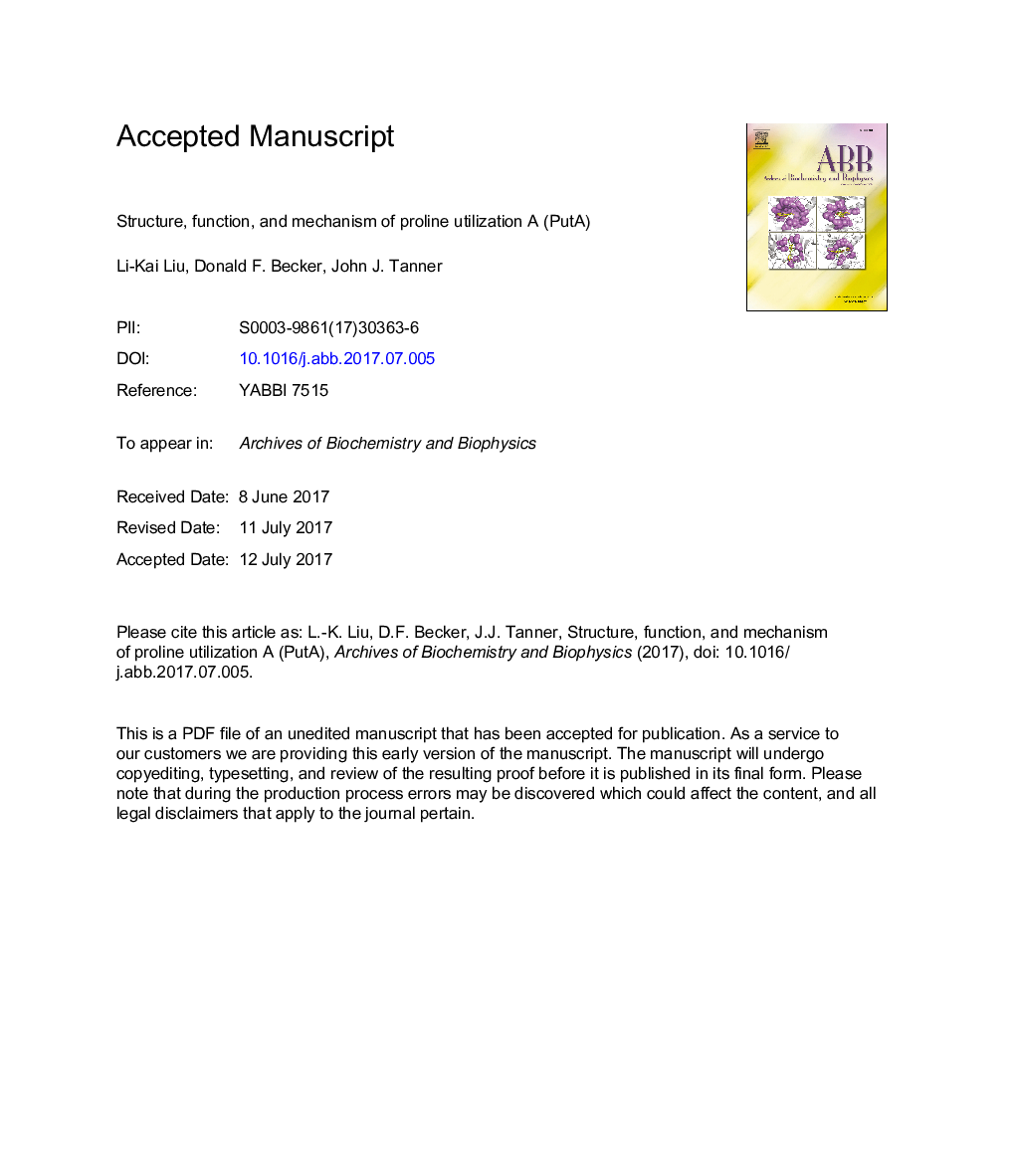| کد مقاله | کد نشریه | سال انتشار | مقاله انگلیسی | نسخه تمام متن |
|---|---|---|---|---|
| 8288982 | 1536273 | 2017 | 51 صفحه PDF | دانلود رایگان |
عنوان انگلیسی مقاله ISI
Structure, function, and mechanism of proline utilization A (PutA)
دانلود مقاله + سفارش ترجمه
دانلود مقاله ISI انگلیسی
رایگان برای ایرانیان
کلمات کلیدی
ALDHproline catabolismProDHDMGOP5CTHFAPDBribbon-helix-helixNQORHHΔ1-pyrroline-5-carboxylate - Δ1-پیکرولین-5-کربوکسیلاتaldehyde dehydrogenase - آلدئید دهیدروژنازγ-aminobutyric acid - اسید γ-آمینوبوتیریکputa - بارهاProtein structure - ساختار پروتئینChorismate synthase - سنتاز کوریسماتFlavoprotein - فلاوپروتئینProtein Data Bank - پروتئین بانک اطلاعاتیproline dehydrogenase - پرولین دهیدروژنازSubstrate channeling - کانالینگ بسترQuinone reductase - کوئینون ردوکتازGABA - گابا
موضوعات مرتبط
علوم زیستی و بیوفناوری
بیوشیمی، ژنتیک و زیست شناسی مولکولی
زیست شیمی
پیش نمایش صفحه اول مقاله

چکیده انگلیسی
Proline has important roles in multiple biological processes such as cellular bioenergetics, cell growth, oxidative and osmotic stress response, protein folding and stability, and redox signaling. The proline catabolic pathway, which forms glutamate, enables organisms to utilize proline as a carbon, nitrogen, and energy source. FAD-dependent proline dehydrogenase (PRODH) and NAD+-dependent glutamate semialdehyde dehydrogenase (GSALDH) convert proline to glutamate in two sequential oxidative steps. Depletion of PRODH and GSALDH in humans leads to hyperprolinemia, which is associated with mental disorders such as schizophrenia. Also, some pathogens require proline catabolism for virulence. A unique aspect of proline catabolism is the multifunctional proline utilization A (PutA) enzyme found in Gram-negative bacteria. PutA is a large (>1000 residues) bifunctional enzyme that combines PRODH and GSALDH activities into one polypeptide chain. In addition, some PutAs function as a DNA-binding transcriptional repressor of proline utilization genes. This review describes several attributes of PutA that make it a remarkable flavoenzyme: (1) diversity of oligomeric state and quaternary structure; (2) substrate channeling and enzyme hysteresis; (3) DNA-binding activity and transcriptional repressor function; and (4) flavin redox dependent changes in subcellular location and function in response to proline (functional switching).
ناشر
Database: Elsevier - ScienceDirect (ساینس دایرکت)
Journal: Archives of Biochemistry and Biophysics - Volume 632, 15 October 2017, Pages 142-157
Journal: Archives of Biochemistry and Biophysics - Volume 632, 15 October 2017, Pages 142-157
نویسندگان
Li-Kai Liu, Donald F. Becker, John J. Tanner,